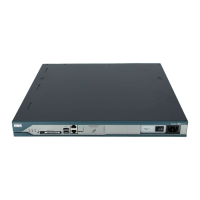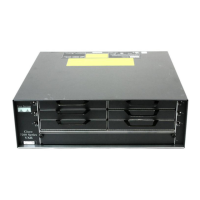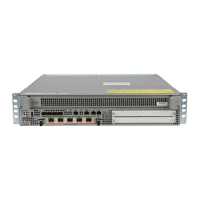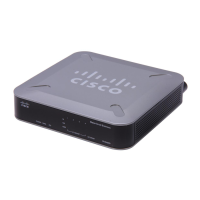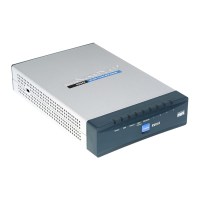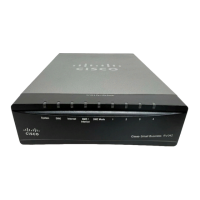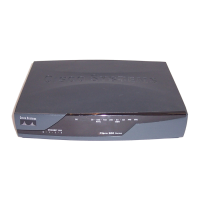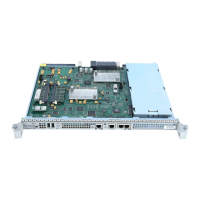4-4
Cisco PNNI Network Planning Guide for MGX and SES Products, Release 5
Part Number OL-3847-01 Rev. D0, April, 2004
Chapter 4 Planning Intermediate Route Selection
How MGX and SES Nodes Select Routes
an external network, the use of the 0-length prefix allows the administrator to specify that all calls that
do not match a longer prefix should be routed to the external network. If the 0-length prefix is not used,
the administrator must manually configure static addresses for all external destinations.
MGX and SES nodes generate routing tables using PTSE information from other nodes and the Dijkstra
SPF Algorithm. The pre-computed routing tables are derived by applying the following information
from the PTSEs:
• Destination address
• AW
• CTD
• CDV
• Available bandwidth
• Available logical connection numbers (LCNs)
• Port ID
The end result is the set of SPTs shown in Table 4-1.
The SPTs can be divided into the three groups listed in the Traffic Metric column in Table 4-1. For each
traffic metric, a class of service SPT is created for each class of service listed in the Class of Service
Tables column. The service classes are defined in Ta ble 4-2.
Table 4-1 Pre-calculated Routing Tables
Traffic Metric Class of Service Tables
AW CBR, rt-VBR, nrt-VBR, ABR, UBR
CTD CBR, rt-VBR, nrt-VBR
CDV CBR, rt-VBR
Table 4-2 Supported Service Classes for MGX and SES Nodes
Service
Class Acronym Definition Guidelines
CBR
Constant bit rate Use to limit connections to a static amount of bandwidth that is continuously
available until the connection is torn down. The amount of bandwidth is
characterized by the peak cell rate (PCR) value.
rt-VBR
Real-time variable bit rate Use for real-time applications that require tightly constrained delay and delay
variation (voice/video applications). Category characterized in terms of a PCR,
sustainable cell rate (SCR), and maximum burst size (MBS).
nrt-VBR
Non-real-time variable bit
rate
Use for non-real-time applications with bursty traffic. Category is characterized
in terms of a PCR, SCR, and MBS.
ABR
Available bit rate Use to allow ATM layer transfer characteristics provided by the network to
change after the connection is established. Flow control mechanism is specified.
UBR
Unspecified bit rate Use for unspecified bit-rate ranges. This setting provides only maximum bit-rate
configuration—no bit rate is guaranteed.

